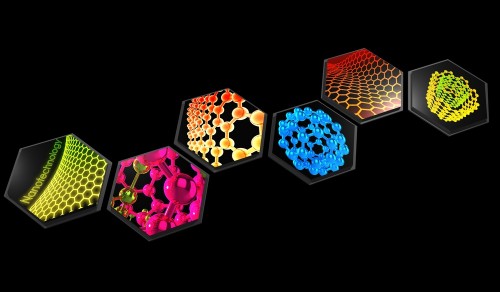"We connected two worlds, nano-photonics and deep learning, and developed a new method with almost infinite application potential in many fields," concludes Dr. Chaim Suchovsky from Tel Aviv University

The developed method associates within a fraction of a second between engineered nanoscale structures and their unique optical properties, and has many applications: from the detection and treatment of cancerous tumors to the monitoring of toxic gases in the air we breathe
A ground-breaking interdisciplinary collaboration at Tel Aviv University, between researchers at the School of Physics led by Dr. Haim Suchovski and at the Blavatnik School of Computer Science led by Prof. Lior Wolff, enabled the development of an innovative, precise and extremely fast method for identifying optical properties of nanoscale structures. According to the researchers, the new technology has a huge and diverse application potential - from drug carriers for cancer tumors, through solar cells and environmental monitoring, to the efficient and fast detection of damaged chips in the electronics industry.
Also participating in the research were: Dr. Michael Marjan, Ahya Nagler and Uri Arieli from the School of Physics and Itzik Malchiel from the School of Computer Science. The article was published in September 2018 in the journal Light: Science & Applications from the Nature group.
"Nano-photonics deals with the interaction of light with tiny structures at the nanometer level, where the particle itself may be smaller than the wavelength of the light," explains Dr. Suchovski. "These particles, which we engineer in the laboratory, in many cases have new optical properties, different from the properties of the same materials as we know them in nature. Such engineered materials are called metamaterials. For example, gold or silver particles can take on a different color, such as red or blue. It turns out that this fact was already used hundreds of years ago by artists who created the colored stained glass windows in churches throughout Europe: they used to mix silver powder with melted glass, and thus achieved the spectacular colors. Of course, they did not understand the scientific aspect of the operation at the time, which was only deciphered about 20 years ago."
The researchers in Dr. Suchovski's nanophotonics lab engineer nanoscale structures to achieve desired, predefined properties. One of the intriguing phenomena that can be created in this way is the 'cloak of disappearance', which completely disappears the structure... However, as Dr. Marjan explains, "The work of the Hindus has until now been a 'Sisyphean' work of manual trial and error, which takes two weeks at best. We were looking for ways to speed up the process so that the technology would be more friendly and available, both for research purposes and for applications in diverse fields." A fruitful meeting between the physicists and the computer scientists specializing in deep learning led to the long-awaited breakthrough.
"Deep learning is a field of machine learning, which is currently undergoing accelerated development," explains Prof. Wolff. "These are artificial neural networks with a large number of layers that are able to learn effectively from a very large amount of data, and to generalize to new examples that are fundamentally different from the examples seen during training. The field of artificial intelligence is enjoying
Image recognition
Blooming anew in recent years thanks to the development of deep learning and areas such as image recognition, speech recognition, automatic translation, etc. are much more developed today than they were just a few years ago. A student introduced me to Dr. Suchovski, and almost immediately we set out to test the hypothesis that through deep learning we could effectively design nanoparticles and observe their unique optical properties."
To teach the network to perform the requested identification, the researchers fed it data on 15,000 known tiny geometric structures and their optical properties. The network has learned to associate the geometric structure with the features, and the results are extremely promising: instead of prolonged manual work, the computer provides an accurate answer within a hundredth of a second! Moreover, the new method works well in both directions: if you show the computer a list of optical properties it immediately describes the tiny structure that will provide those properties; And if, alternatively, he is presented with an existing structure, he immediately deciphers its properties.
"We connected two worlds, nano-photonics and deep learning, and developed a new method with almost infinite application potential in many fields," concludes Dr. Suchovski. "Cancer researchers, for example, will be able to use it to design tiny drug carriers that will accurately identify cancer cells in the body, according to their unique optical properties; In the electronics industry it will be possible to locate defects in electronic chips - by passing a light beam through the chips and identifying the optical properties of a normal chip versus abnormalities; In the field of energy we can design solar cells and significantly improve the absorption of solar energy; And sensors based on engineered nanoparticles, which will be precisely matched to different molecules, will be able to perform environmental monitoring of toxic gases and water molecules in the atmosphere, discover biological molecules, and more. And we believe this is just the beginning..."

One response
Free version
https://arxiv.org/ftp/arxiv/papers/1702/1702.07949.pdf